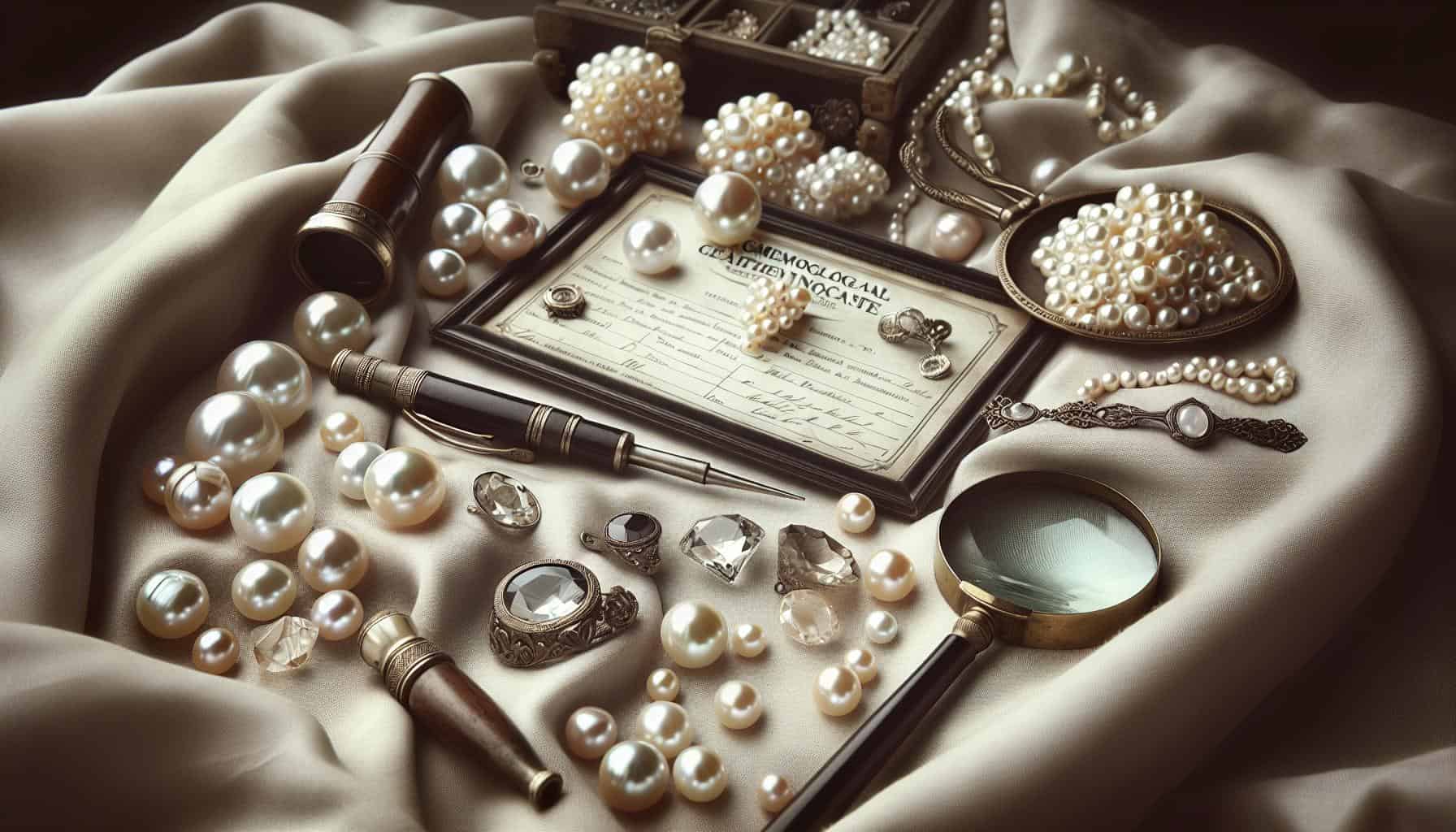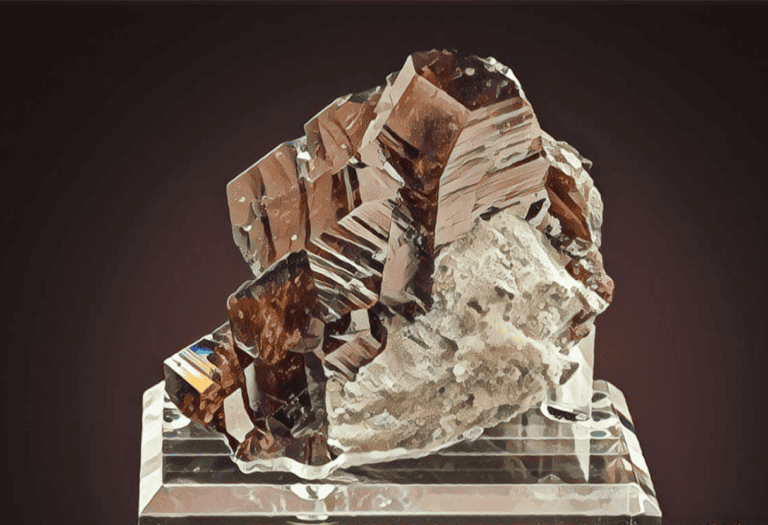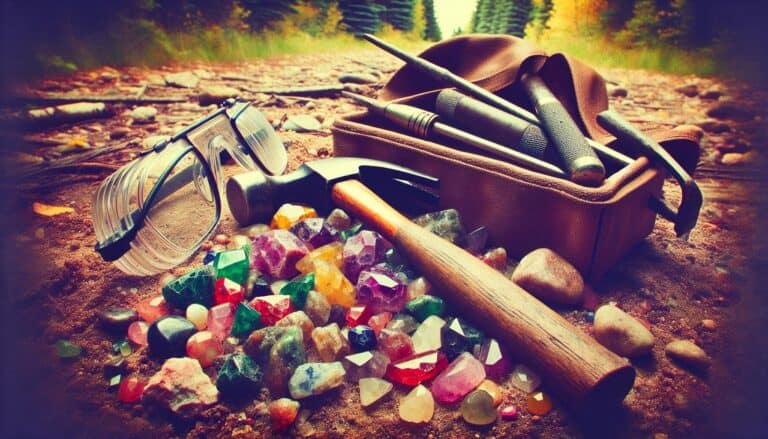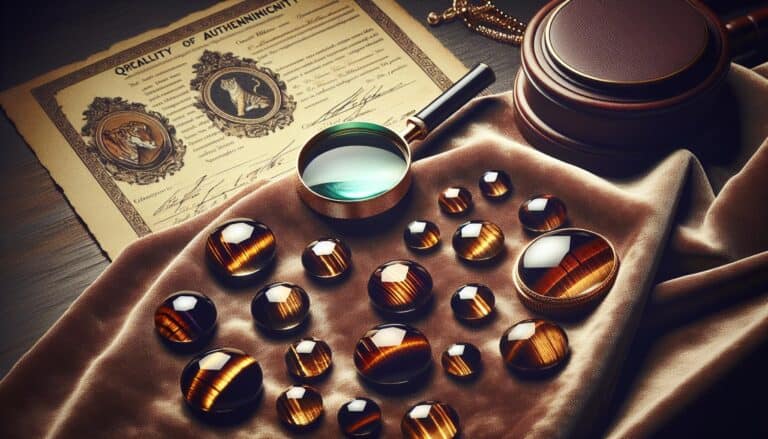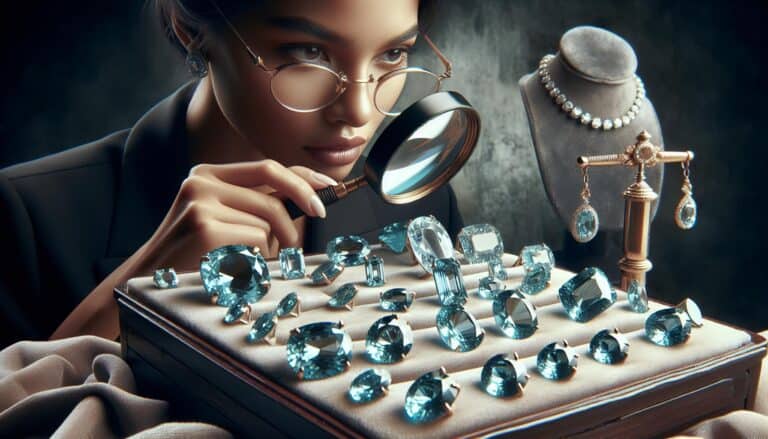Ever wondered about the value of those lustrous gems sitting in your jewelry box?
Pearls, with their subtle shimmer, have captivated people for centuries, and they’re as much a style statement today as they were in ancient times. But what’s the real worth of a pearl?
Determining a pearl’s value isn’t as straightforward as you might think. It’s not just about size or color; several factors come into play. From the type of pearl to its origin, each aspect can significantly sway its price tag.
Let’s dive into the world of pearls and find out what makes them a treasured piece with a price as unique as their shapes.
Pearl worth hinges on luster, surface, shape, color, size, rarity, and type. Graded on AAA-A or A-D scales, with AAA/A being highest. Ensure authenticity with gemological certification and buy from reputable sources.
What Is Pearl?
Pearls are organic gemstones that are highly valued for their calming beauty. They’re formed within the soft tissue of a living shelled mollusk and are the only gems produced by a living creature. Unlike other gemstones that are mined from the earth, pearls are considered unique for their origins in water bodies, such as oceans, lakes, and rivers.
The creation of a pearl begins when an irritant, often a parasite or a grain of sand, makes its way into the mollusk. In response, the creature secretes layers of nacre, a luminous substance that gradually forms the pearl. The quality, size, and type of the pearl can vary dramatically depending on the mollusk and the environment it’s in.
There are several types of pearls, each with distinctive features:
- Akoya Pearls: These are classic cultured pearls that typically come from Japan or China and are known for their perfect round shapes and lustrous sheen.
- Tahitian Pearls: Sourced from the waters of French Polynesia, these pearls are remarkable for their dark colors and are often referred to as “black pearls”.
- South Sea Pearls: Larger in size, these pearls are cultivated in the South Seas around Australia, Indonesia, and the Philippines and are prized for their satiny luster and thick nacre.
- Freshwater Pearls: Mostly farmed in China, these come in a variety of shapes and colors and generally have a softer luster than saltwater pearls.
Each pearl type bears individual characteristics that influence its value. But beyond type, other factors like luster, surface quality, shape, color, and size, play essential roles in determining a pearl’s worth. Remember, pearls with high luster, smooth surfaces, and symmetrical shapes are typically valued higher. Similarly, certain colors, depending on rarity and demand, can command premium prices. When assessing a pearl’s value, all these attributes must be carefully considered to truly understand its worth.
Pearl Prices: Factors That Affect Value
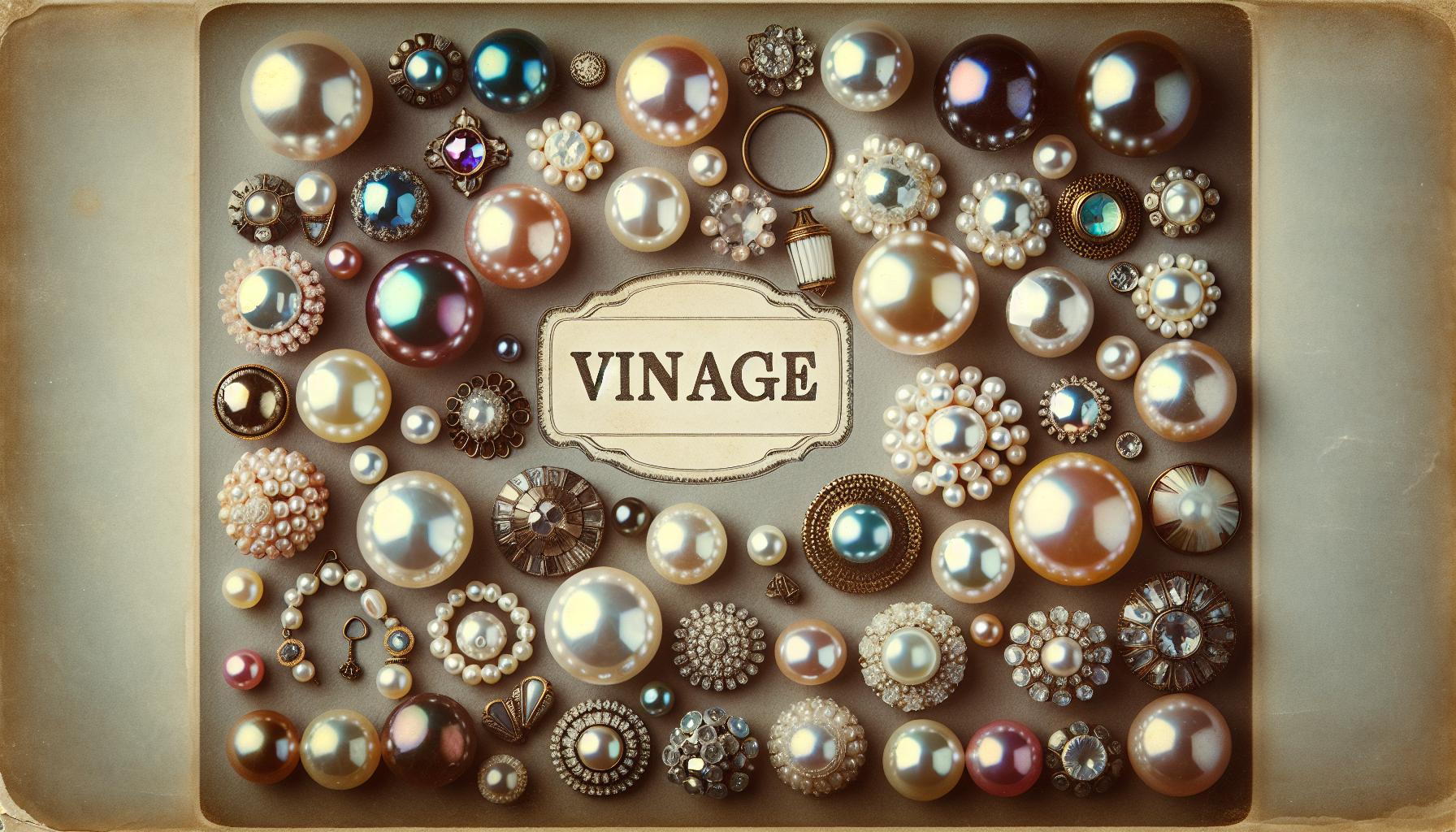
When you’re looking to invest in pearls, understanding what drives their price is crucial. The value of pearls can fluctuate greatly depending on a variety of elements. You’ll find that even minute details can have a significant impact on the cost. Let’s delve into some of the factors that profoundly influence pearl prices.
Color, Clarity, and Cut Quality
Pearls come in a spectrum of colors, ranging from classic white to black and every hue in between. The rarity of the color plays a huge role in determining value. Natural colors like silver, pink, gold, and blue are highly coveted and can drive up the price. Your pearl’s overtones, the subtle color lying atop the main body color, also affect the price. Overtones can enhance a pearl’s beauty and depth, making it more desirable and, therefore, more expensive.
Clarity refers to the surface quality of the pearl. It’s about the blemishes and irregularities you can see with the naked eye. The fewer the imperfections, the higher the pearl’s value. Naturally, perfect pearls are rare, and those with high clarity demand top dollar.
Although pearls don’t get cut like other gemstones, their ‘cut quality’ or shape is equally essential. Round pearls are the most sought-after and typically the most expensive because of their rarity. Baroque pearls, which are irregularly shaped, might be less expensive, but they offer a unique charm that can be quite appealing.
Market Demand and Availability
The law of supply and demand heavily influences pearl prices. As with any commodity, when the demand for pearls exceeds supply, prices soar. Conversely, if the market is flooded with certain types of pearls, their value might decrease. Your timing when entering the market can make a significant difference in the price you’ll pay.
The availability of pearls is linked to this demand and has its own set of influencing factors. Farming conditions, weather patterns, and even geopolitical issues can all affect pearl production, which in turn impacts availability. For example, Akoya pearls are primarily farmed in Japan, and any disturbance in this region can affect the global supply.
Exclusive pearls like the South Sea and Tahitian varieties often come with a higher price tag due to their limited production and unique qualities. South Sea Pearls, known for their remarkable size and luster, are cultivated in the waters off Australia, the Philippines, Indonesia, and Myanmar. Tahitian Pearls’ hallmark is their exotic dark colors, sourced mainly from French Polynesia. Due to their geographic exclusivity and distinctive features, these pearls hold a premium status in the market.
When considering a pearl purchase, keep in mind the current trends and cultural influences that might be affecting market demand and availability. These factors may not be immediately visible, but they’re always at play, subtly shaping the value of pearls worldwide.
Understanding Pearl: A Rare Gem
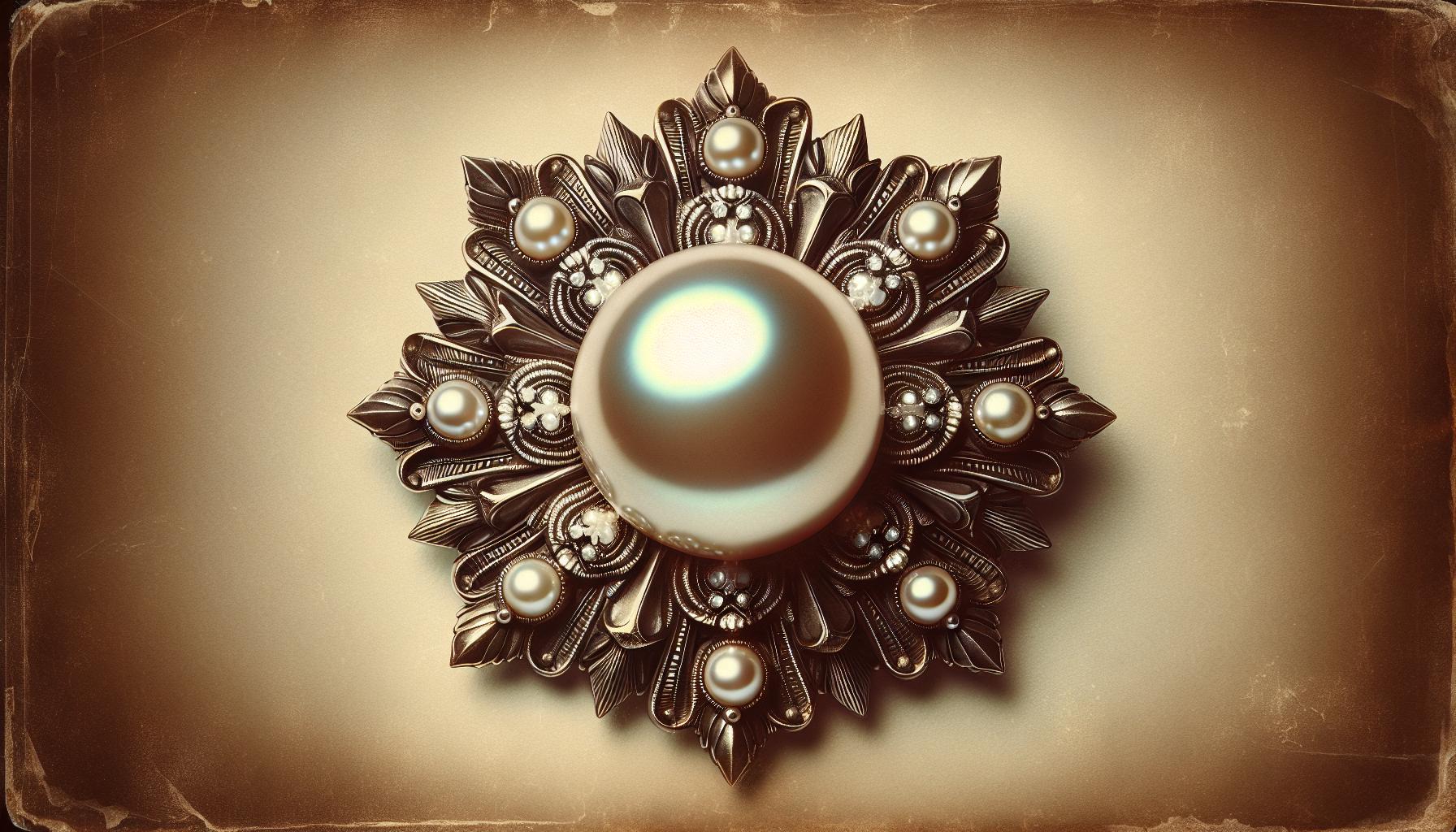
The Rarity of Pearl
Pearls are unique among gemstones because they’re the only ones formed within a living creature. Unlike other gems mined from the Earth, pearls are created by mollusks following an irritation, such as a grain of sand. This process of pearl creation, known as nacre deposition, can take several years, adding layers upon layers to what eventually becomes the pearl you see.
Natural pearls are exceedingly rare, making them a prized possession throughout history. Nowadays, most pearls on the market are cultured or farmed, as the wild populations that produce natural pearls have dwindled due to overfishing and environmental changes. The rarity of natural pearls means they often fetch a higher price than their cultured counterparts.
Origins and Characteristics
Pearls come from a range of sources, both freshwater and saltwater, and the origin greatly affects their value. Saltwater pearls, including the famed Akoya, Tahitian and South Sea pearls, tend to be more valuable due to their lustrous appearance and the higher cost of cultivation.
Beyond origin, the characteristics that make each pearl unique are:
- Luster: The measure of a pearl’s shine and reflective quality.
- Size: Generally, larger pearls are more valuable, as they take longer to form.
- Shape: While round pearls are desirable, other shapes such as baroque can be equally enchanting.
- Color: From classic white to exotic black, colors add another dimension to a pearl’s beauty.
Pearls are also gauged on their:
- Overtones: Subtle color laid over the main body color.
- Surface quality: Pearls with fewer blemishes are more sought after.
- Nacre quality: Thicker nacre implies a more durable and lustrous pearl.
Taken together, these aspects influence not just the value, but the very essence of what makes a pearl the treasured gem it is. With their wide range in variance, pearls offer something for everyone, whether you’re seeking the perfect elegant accessory or an investment in timeless luxury. Understanding a pearl’s origins and unique characteristics helps you appreciate the art and nature behind each lustrous gem, adding a deeper layer of value to your collection.
Pearl Grading and Valuation
The Grading System for Pearls
Understanding the grading system for pearls is crucial when you’re trying to ascertain their value. Unlike diamonds that have a universally accepted grading system (the 4 Cs), pearls are graded based on a variety of systems, often unique to each pearl-producing region. The most commonly recognized standards, however, include the AAA-A scale and the A-D scale, also known as the Tahitian system.
AAA pearls are the top-quality pearls with the highest levels of luster and only minor surface imperfections. AA pearls have slightly lower luster and more imperfections, while A grade pearls carry significant imperfections and reduced luster. The Tahitian system’s A grade corresponds to the top-quality grade in AAA-A system, with D being the lowest with poor luster and many surface defects.
It’s important to note that each pearl is unique, and as such, grading isn’t an exact science. Here’s a brief breakdown of key quality indicators in pearls:
- Luster – The most critical factor, determining the reflective quality and brightness
- Surface – The number of imperfections and cleanliness
- Shape – Round pearls are the most sought after, although other shapes like baroque can be valuable
- Color – While largely a matter of preference, some colors are rarer and more valuable
- Size – Generally, larger pearls command higher prices
- Nacre Thickness – Thicker nacre improves durability and luster
- Matching – For pearl jewelry, how well the pearls match each other
Certification and Appraisal
When you own pearls, obtaining a certificate or an appraisal can provide proof of their value and characteristics. Reputable jewelers or gemological laboratories offer certification to attest to the authenticity and grade of your pearls.
During an appraisal, an expert examines your pearls to determine their market value. This is often done for insurance purposes or before a sale. The appraiser will consider all quality factors, the type of pearl, and current market trends to provide a valuation. Keep in mind, appraisal values can fluctuate based on the gemstone market and consumer demand.
Here are some key points to remember when seeking a pearl certification or appraisal:
- Choose a certified gemologist with a specialization in pearls.
- Ensure transparency in the grading process.
- Market conditions vary; re-appraise your pearls every few years.
- Documentation from the appraisal adds to your pearl’s credibility and providence.
By being informed about your pearl’s grading and ensuring a competent appraisal, you’re well-equipped to appreciate, insure, or sell your precious gemstones. Remembering that the value of pearls is as much in their unique beauty as it is in these technical assessments will serve you well on your journey into the world of fine jewelry.
Current Market Trends in Pearl Pricing
As you delve into pearl pricing, staying on top of current market trends is crucial. The fluctuating fashion industry, economic shifts, and consumer preferences all play pivotal roles in shaping the pearl market.
In recent years, there has been a notable rise in demand for pearls, particularly in the luxury sector. Designers are increasingly incorporating pearls into both classic and contemporary styles, giving these gems a modern edge that appeals to diverse demographics. The surge in interest is not just limited to jewelry; pearls are making appearances in accessories and clothing, which in turn, influences their market value.
Another trend is the growing popularity of sustainable and ethical jewelry. As consumers become more environmentally conscious, pearls, being organic gems, are well-positioned in the marketplace. This sustainability aspect can potentially increase their worth, as today’s buyers are often willing to pay a premium for jewelry that aligns with their values.
Cultured pearls, especially from known regions like the South Sea or Akoya, continue to command high prices due to their superior quality and rarity. However, with advancements in pearl farming, there has been an influx of high-quality pearls on the market, which could potentially stabilize or even lower prices for certain types of cultured pearls.
| Year | Demand Trend | Average Price Increase |
|---|---|---|
| 2021 | Rising | 5% |
| 2022 | Steady | 3% |
While the AAA-A and A-D grading scale remains a steadfast method of valuation, fluctuations in supply, particularly with rare colors or oversized pearls, can cause significant shifts in prices. Tracking auction results and dealer listings can give you insights into how much particular pearls are worth at any given time, offering a real-time snapshot of the market. Keep in mind, the most sought-after pearls often defy standard price brackets due to their uniqueness and collector interest.
The Most Expensive Pearl
When you’re exploring the world of luxurious pearls, you’ll find that certain pieces stand out not just for their luster and shape but also for their staggering price tags. The title of the most expensive pearl ever sold was once held by the La Peregrina Pearl, a historical gem with an intriguing past of royal ownership. This pearl was sold for an impressive $11 million at an auction in 2011. But even La Peregrina has been surpassed.
Remarkably, the Lao Tzu Pearl or the Pearl of Lao Tzu, often overshadows other expensive pearls. This massive pearl, weighing approximately 14 pounds and measuring over 9 inches in diameter, is not your traditional gem-quality pearl, as it’s a non-nacreous pearl from a giant clam. Its estimated value exceeds $100 million, making it one of the most valuable pearls ever documented.
It’s not just size that dictates price. Intense colors like gold, pink, and blue can drive the cost skyward. The Golden South Sea Pearls, for example, are revered for their rich color and large size. Originating from the South Seas, these sought-after pearls often command high prices in the range of several thousand dollars for single pieces.
To give you an idea of how luxurious pearls can be, here’s a breakdown of some record-breaking sale prices:
| Pearl Type | Sale Price | Auction Year |
|---|---|---|
| La Peregrina Pearl | $11 Million | 2011 |
| Pearl of Lao Tzu | Estimated >$100M | Not Sold |
| Golden South Sea Pearls | Thousands/Per Pearl | N/A |
As the allure of precious pearls continues to captivate buyers around the globe, the escalation in prices reflects their rarity and the opulence they symbolize. High-profile auctions serve as a vital indicator of what the elite are willing to pay for these maritime treasures, setting benchmarks for the pearl industry. With a constant eye on market shifts and collector interest, understanding the luxury market for pearls is essential for any investor or enthusiast looking to indulge in these timeless gems.
Buying Pearl: Tips and Recommendations
When you’re in the market for a pearl, knowing where to find high-quality pieces and how to guarantee their authenticity is crucial. Whether you’re a collector, an investor, or simply looking for a stunning piece of jewelry, the following tips and recommendations will guide you towards making an informed purchase.
Where to Purchase High-Quality Pearl
Hunting for the perfect pearl could be a challenge, but knowing the right places to look can ease the process. Authorized jewelers and specialty stores are typically the go-to options due to their reputations and expertise. These establishments often provide a certificate of authenticity and can offer expert advice on the quality and care of pearls.
- Online Marketplaces are becoming increasingly popular for purchasing pearls due to the convenience and variety they offer. However, it’s important to pick well-established platforms with verified sellers.
- Auctions are another avenue where you might find rare and valuable pearls. They allow you to bid on unique pieces that might not be available elsewhere.
- Pearl farms offer the opportunity to purchase directly from the source, ensuring a high level of transparency regarding the pearl’s origin and quality.
Check for a Return Policy as this is often a good indicator of the seller’s confidence in their product.
Ensuring Authenticity and Value
With the risk of counterfeit pearls in the market, verifying authenticity is essential. It’s recommended to always ask for a graduation certificate from a reputable gemological laboratory, which should include details about the pearl’s shape, size, color, luster, surface quality, nacre quality, and match.
- Luster and Surface Quality: A high-quality pearl should have a bright luster and a smooth surface. Any dullness or surface blemishes can significantly reduce its value.
- Nacre Thickness: Thicker nacre typically means a better-quality pearl that will be more durable over time.
- Size and Shape: While the desired size and shape are often a matter of personal preference, round and larger pearls generally carry more value.
Performing a simple “tooth test” can also be helpful; gently rubbing the pearl against the edge of your teeth can tell you if it’s real or imitation. Real pearls feel slightly gritty due to their microscopic crystalline structure, while imitation pearls are often smooth.
Gaining knowledge about the market trends and staying informed through gemology courses or industry publications can further empower you to make wise investments in pearls.
Remember, when it comes to buying pearls, diligent research and verification are as important as your personal taste and budget considerations.
Conclusion: Buying & Selling Pearl
Understanding the value of pearls is a nuanced endeavor.
Armed with the knowledge of what to look for in terms of luster, surface quality, nacre thickness, size, and shape, you’re well-equipped to make an informed decision. Remember, the true worth of a pearl is not only in its price tag but also in the beauty and elegance it adds to your collection. Trust your instincts, do your homework, and you’ll find pearls that not only have lasting value but also bring a timeless sophistication to your style.
Whether you’re at an auction, browsing online, or visiting a pearl farm, you’re now ready to select pearls that are as unique and precious as your individual taste.

